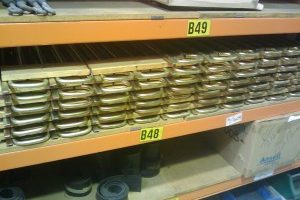Maintenance and reliability engineers will happily (well, not happily) undertake a review of spare parts that are not classified as critical, yet they will shy away from reviewing items that are classified as critical spare parts. Why? Why should you choose to avoid reviewing spare parts that are classified as
Eliminating Spare Parts Stock Outs
One of the main fears of most reliability and maintenance engineers is that, at the time of actual need, the required spare part will not be available. This is commonly referred to as a stock out. Thus the goal of many reliability and maintenance engineers is to eliminate spare parts
18 Tips for a More Efficient and Effective Stock Take
A stock take can be an administrative nightmare or they can be efficient and effective. It all depends on how they are set up and organized. For access to this post, and all of our content, join using the button below. If you are already registered then
Some Cold, Hard Facts About Stock Takes
One of the key functions that must be carried out with all inventory management is a periodic reconciliation between actual stock holdings and the holdings according to the accounting system. For complimentary access to this article and our entire blog archive, register using the button below. We
The Spare Parts Storeroom – More Than Just Transactions
For access to this post, and all of our content, join using the button below. If you are already registered then you need to log-in. Many people view the spare parts storeroom as being a purely transactional environment. That the function of the storeroom is to administer
Managing Slow Moving Inventory
Is Slow Moving Inventory Really An Easy Target for Inventory Reduction? Inventory that is slow moving is often seen as an easy target for people undertaking an inventory review. Rather than undertake a structured review process (such as the Inventory Cash Release Process) many people will target slow moving
The Right Spare Parts Metric – Accuracy Vs Precision
Performance measurement with the right metric is the cornerstone of all improvements efforts. If you don’t or can’t measure where you are now versus where you were before, then how do you know if you have improved? Just as importantly, however, is knowing if your measure actually reflects your current

